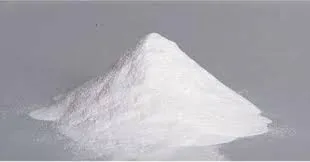
ພ.ຈ. . 19, 2024 19:45 Back to list
Top Manufacturers of Methyl Hydroxyethyl Cellulose in China for Quality Products
Exploring the Role of Methyl Hydroxyethyl Cellulose in Various Industries
Methyl Hydroxyethyl Cellulose (MHEC) is a versatile cellulose derivative extensively used in various industrial applications, including construction, pharmaceuticals, food production, and cosmetics. As the demand for eco-friendly and sustainable materials continues to grow, MHEC is gaining recognition for its unique properties and performance benefits. In this article, we will explore the significance of MHEC, its manufacturing process, and its applications across different sectors.
What is Methyl Hydroxyethyl Cellulose?
Methyl Hydroxyethyl Cellulose is a non-ionic, water-soluble polymer derived from natural cellulose. It is produced through the chemical modification of cellulose, wherein methyl and hydroxyethyl groups are introduced into the cellulose structure. This modification enhances its solubility and thickening properties, making it suitable for various applications. MHEC is characterized by its excellent water retention, film-forming ability, and stability across a wide range of pH levels and temperatures.
Manufacturing Process
The production of MHEC involves several steps, beginning with the extraction of cellulose from natural sources such as wood pulp or cotton. The extracted cellulose is then subjected to a series of chemical reactions, including alkalization and etherification, to introduce the methyl and hydroxyethyl groups. The resulting MHEC can be further processed to achieve desired characteristics such as viscosity and particle size, tailored to specific industry needs.
Leading manufacturers in China have invested significantly in advanced technologies and equipment to enhance production efficiency and product quality. By adhering to strict international quality standards, these manufacturers offer a diverse range of MHEC grades that cater to various applications.
Applications of MHEC
1. Construction Industry
MHEC is widely used in the construction sector as an essential additive in cement-based products, such as tile adhesives, plasters, and mortars. Its water-retention properties help improve workability, allowing for better adhesion and reduced cracking during drying. Moreover, MHEC enhances the strength and durability of construction materials, making it an indispensable component in modern construction practices.
china mhec-methhyl hydroxyethyl cellulose manufacturer

2. Pharmaceuticals
In the pharmaceutical industry, MHEC functions as a binder, thickener, and stabilizer in various formulations, including tablets, suspensions, and topical creams. Its biocompatibility and non-toxicity make it a preferred choice for drug delivery systems. Additionally, MHEC can help improve the texture and viscosity of lotions and ointments, providing a smoother application experience.
3. Food Production
MHEC is recognized as a safe food additive, commonly used as a thickening agent, emulsifier, and stabilizer in food products. It helps improve the texture and shelf-life of various food items, including sauces, dressings, and dairy products. MHEC is particularly valued in the gluten-free food sector, where it contributes to the desirable viscosity and consistency of products.
4. Cosmetics and Personal Care
The cosmetic industry leverages the properties of MHEC to enhance the performance of creams, gels, and shampoos. It acts as a thickening agent, helping to achieve optimal viscosity while providing a smooth and luxurious feel on the skin and hair. MHEC’s capability to retain moisture also makes it an effective ingredient in hydrating skin-care products.
Conclusion
Methyl Hydroxyethyl Cellulose is a multifunctional polymer that plays a crucial role across diverse industries, from construction to pharmaceuticals and food production to cosmetics. As concerns over environmental sustainability continue to rise, the demand for MHEC as a natural, biodegradable raw material is likely to increase. Chinese manufacturers are poised to meet this demand, offering high-quality MHEC products that drive innovation and efficiency in various applications.
In summary, MHEC embodies the convergence of versatility, functionality, and sustainability, making it an essential component in modern industrial formulations. As industries evolve, MHEC is set to remain a central player in ongoing efforts to create better-performing, environmentally friendly products.
-
tile-bonding-additives-for-stronger-bonds
NewsAug.22,2025
-
construction-grade-rdp-for-wholesale-needs
NewsAug.22,2025
-
trusted-wholesale-hec-partners
NewsAug.22,2025
-
hec-solutions-for-industrial-excellence
NewsAug.22,2025
-
construction-additives-need-hpmc-essentials
NewsAug.22,2025
-
hpmc-versatile-cellulose-ether-for-industries
NewsAug.22,2025







